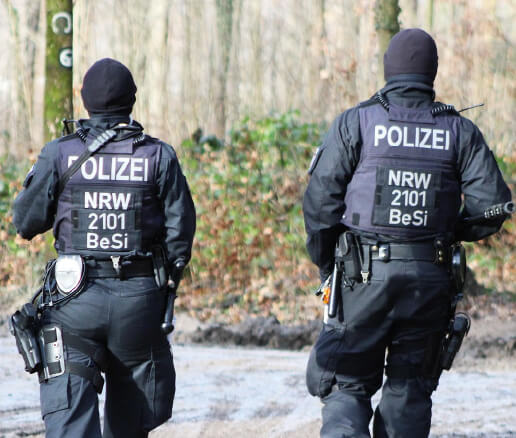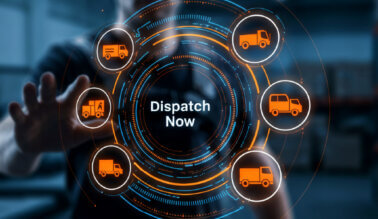by Webbing Team
Along with many IoT connectivity usage scenarios that are common for all first responders, such as body worn cameras, surveillance drones or mission-critical push-to-talk, there are also use cases that are specific to police and security forces. They imply investigation, enforcement, surveillance, and evidence handling – applications that all require mobile and high-speed data access.
Cellular connectivity allows police officers to stay connected to critical systems while working in the field. Through mobile data terminals or tablets, they can access law enforcement databases, run license plate and ID checks, receive dispatch information, and file incident reports without returning to the station. These real-time capabilities improve efficiency, but what is probably more important – they speed up decision-making during traffic stops, investigations, or emergency calls, helping officers make our cities and roads safer.
Agencies are increasingly using cellular-enabled vehicles, cameras, and even robots to support real-time operations. The police adoption of cellular connectivity is increasing, and there is more to expect from it as the technology evolves – for example, a report says a national 5G standalone network could save UK police 11 million hours a year, and increased efficiency would be comparable to adding 5,400 full-time police officers. With the expansion of 5G networks and more advanced mobile infrastructure, law enforcement organizations are looking for scalable, high-performance connectivity solutions that can adapt to evolving operational needs.
Let’s take a look at some of the use cases and see how cellular connectivity plays an important role in them:
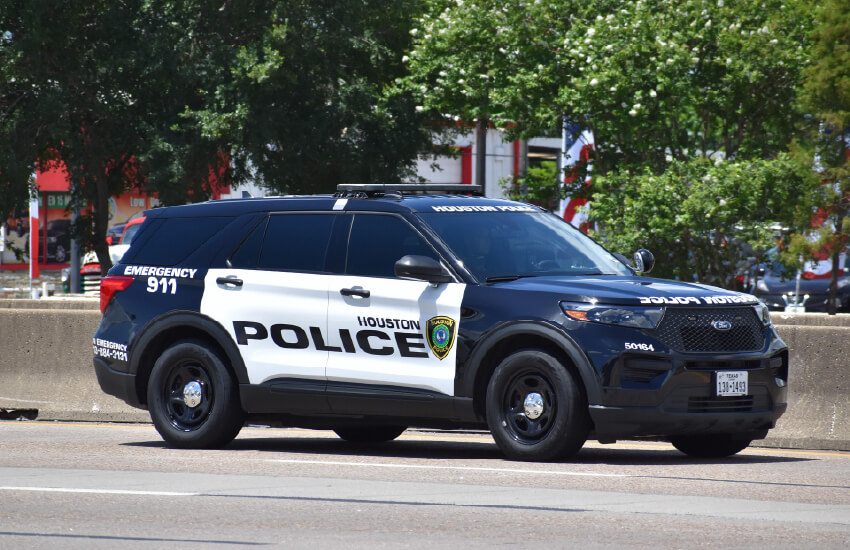
Connected Police Cars
Modern police cars are increasingly connected, but not just because they need to receive calls and updates from dispatchers, or get directions based on traffic or emergencies. Oftentimes they function as mobile command and data hubs.
Apart from communications, cellular connectivity enables real-time location tracking of patrol cars, helping supervisors monitor unit positions and coordinate responses.
Another critical application is access to police databases. Officers can search for information such as driver’s license or criminal records using computers and tablets inside the car. Also, photos, audio, video and incident reports can be uploaded directly from the field to cloud-based evidence systems using the car’s cellular connection, speeding up evidence handling and reducing the risk of losing data.
In practical terms, if a police car loses connectivity, most of its real-time digital tools stop working. That’s why cellular is so important for this use case: unlike Wi-Fi or Ethernet, cellular technology maintains seamless connectivity while the vehicle is in motion and across wide geographic areas. This makes it suitable for police work that spans cities, highways, and rural zones.
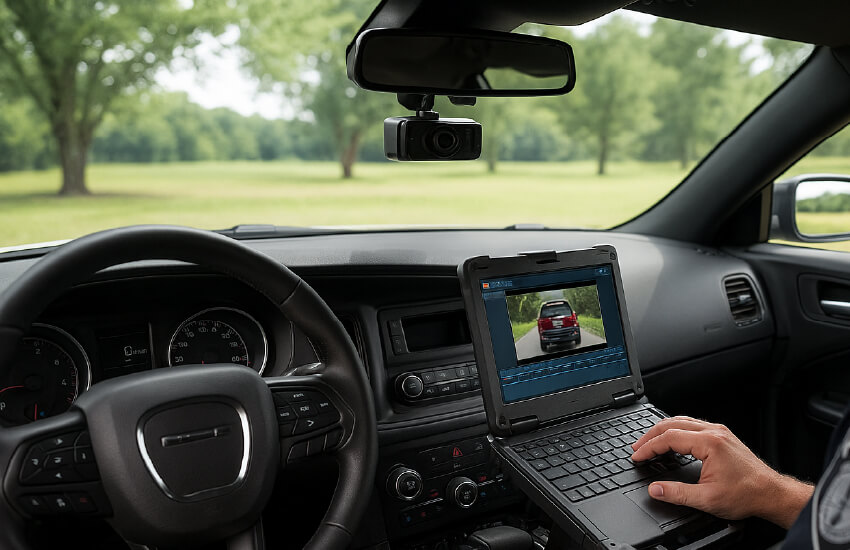
Dash Cams
A dash cam mounted inside a police car records everything happening in front of the vehicle, like traffic stops and car chases. Unlike body cam, it doesn’t follow officers if they leave the car, but it is especially useful for capturing vehicle-based incidents, road behavior, and initial interactions during stops.
With cellular connectivity, dash cameras and other cameras in the car can live-stream video back to police headquarters. It helps supervisors monitor situations as they happen and send backup immediately if needed, even if the officer can’t call for help. This can be critical in fast-moving incidents like pursuits or violent encounters. In addition to capturing video, many of these dash cameras also collect GPS location, speed, and audio, all of which can be used for evidence or reviewed later during investigations.
Cellular connectivity is preferred for police dash cams because it’s mobile, secure, widely available, scalable, and fast enough for real-time use. Alternatives like Wi-Fi are limited to fixed locations, satellite is too expensive and slow for regular use, and custom radio systems don’t offer the bandwidth needed for video streaming.
ALPR cameras
Some police cars are also equipped with cameras that can read license plates, and, if a plate matches a stolen car or a wanted person, officers get alerted right away. ALPR cameras automatically scan license plates on parked or moving vehicles nearby and send it, through a cellular connection, to national or local databases to check for matches. Thanks to the cellular link, this entire process happens within seconds, which allows police officers to take immediate action, like pulling the vehicle over or calling for backup.
ALPR systems can also be installed in fixed locations such as traffic lights, poles, or overpasses to scan license plates as vehicles pass by. Police sometimes use portable ALPR systems that can be placed temporarily on tripods or trailers.
Cellular connectivity allows these cameras to transmit data in real time to law enforcement databases. Actually, it’s cellular connectivity that makes such systems real-time and proactive – without it, officers would either need to perform database checks manually or store the data locally and upload it later. There’s also another reason why cellular is critical: since there can be privacy concerns with ALPR technology, it’s important that cellular technology allows for secure encrypted communication.

Robots
Use cases for cellular connectivity are not limited to devices that officers handle or vehicles they operate. Like other first responders, police and law enforcement agencies use cellular-connected robots for specific tasks.
Police bomb squads are known to have used robots since the 1970s, but nowadays these robots evolved significantly, gaining capabilities such as cameras, robotic arms, water cannons and more recently, cellular communication for remote operation. Their range of usage scenarios has expanded, too. For example, the robotic dog named Roscoe of the Massachusetts State Police Bomb Squad was deployed in a house after police were fired upon. Controlled remotely by state troopers, it checked the house and found someone in the basement, helping police to apprehend them.
China has introduced spherical police robots designed to patrol streets, equipped with tear gas, and capable of facial recognition and tracking. In Las Vegas, robots semi-autonomously patrol areas, deter crime, and assist with surveillance, using 4G LTE to communicate with central systems.
For use cases involving robots, cellular connectivity provides two critical functions: remote control and transmission of data from cameras and sensors that robots have.
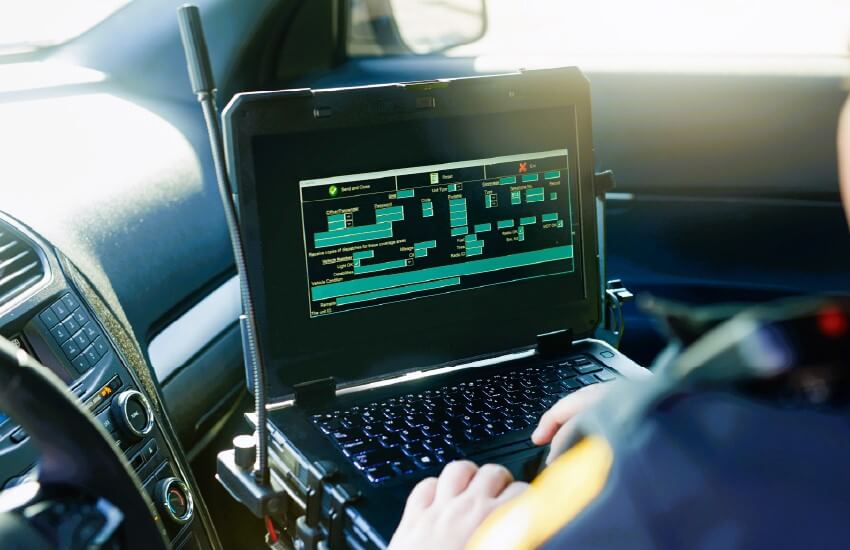
Connectivity Requirements Law Enforcement Operations
With such a broad range of usage scenarios, specific connectivity demands would depend on the type of connected device and application and oftentimes even the area of operation. However, there are common requirements that are important for most police use cases.
Reliable Coverage
Coverage is a crucial connectivity requirement because law enforcement operations may take place literally anywhere, from urban areas with dense infrastructure to remote locations with minimal connectivity. Continuous connectivity is vital for communication between officers and command centers. Besides, for police systems that send and receive real-time data, with poor coverage, some functions may be interrupted or fail entirely. That’s why it is critical that all devices that police officers use can connect to any operator’s network.
Webbing guarantees coverage in over 190 countries and territories through partnerships with more than 600 mobile operators. Webbing’s solutions support connectivity across multiple networks in any location, minimizing the risk of downtime due to network outages or poor coverage.
Seamless Connectivity
Adequate coverage ensures that officers have a reliable backup system for communication and operational needs. However, having access to multiple networks is essential, but every network may have its own weak spots. To ensure constant connectivity, the devices should be capable of connecting to the strongest available network in any given location. For these purposes, for example, Los Angeles Police Department (LAPD) equipped its nearly 2,000 vehicles with routers featuring dual modems, which use SIM cards from different carriers, allowing the system to dynamically switch between cellular providers based on network performance.
With Webbing’s connectivity solutions, a single SIM could achieve similar seamless multi-network access within a region, ensuring uninterrupted operation even in the most challenging environments.
Latency and Bandwidth
Latency is a crucial connectivity parameter for police use cases, since many systems rely on real-time data transmission. Any delay can be critical for the safety of officers and the lives of others, if they fail to receive and act on information in real time. It also affects the operations of drones and robots.
Cellular technology guarantees better latency for devices in the field compared to other types of connectivity. It should be noted though that actual latency would depend on the architecture of the mobile operators’ core network: the data sent by the device needs to travel all the way to the connectivity provider’s data center before going to its destination.
Modern cellular networks (4G LTE and 5G) provide the bandwidth needed to support real-time applications like video streaming, GPS updates, evidence uploads, and secure messaging. These tasks often run simultaneously and require stable uplink and downlink speeds, which cellular can deliver, but sufficient bandwidth also depends on the network solutions that your provider has implemented.
Webbing is a full MVNO, owning their core network, which is a fully redundant, distributed network with data centers on every continent. It features local breakouts and a variety of network solutions to support high-performance connectivity. This infrastructure allows to guarantee high data throughput and low latency to all connected devices.
Compliance with Regulations
As already mentioned, some use cases may raise concerns and require regulatory compliance. For instance, in some areas laws regulate the use of ALPR systems, including public disclosure, data retention policies, and access restrictions. Besides, different regions may have different rules on video storage, encryption, and sharing of data.
Webbing’s solutions help to comply with all kinds of regulatory requirements, be it preventing traffic from leaving the country’s borders, using local IMSI or full localization. Technology and infrastructure-wise, Webbing is capable of forming any architecture required by local legislation. Webbing can also seamlessly localize deployments utilizing Remote SIM Provisioning even in heavily regulated markets, such as Turkey, KSA, Indonesia and other major markets.
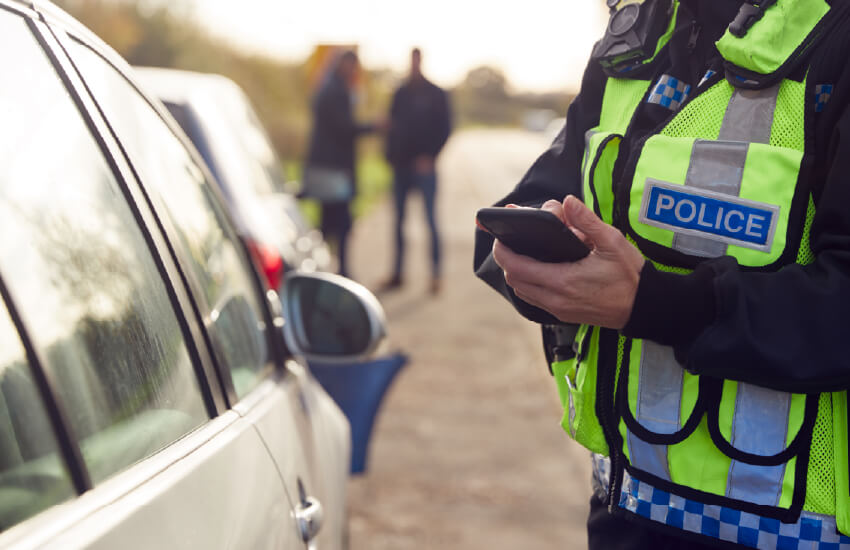
Webbing’s Connectivity Solutions for Police Applications
Webbing offers a connectivity solution that ensures global access to reliable and high-quality internet, with low latency and the best of class coverage. It provides secure and continuous internet connection for all types of cellular-enabled devices, wherever they need it.
As a global MVNO, Webbing’s network of 600+ mobile operators guarantee world-wide coverage. It allows roaming on several carriers’ networks in every region, solving the problem of weak spots that any mobile network may have and ensuring full coverage and continuous connectivity even at remote locations.
A distributed core network with local breakouts, multiple network solutions, and data server redundancy helps Webbing provide stable connections, high data throughput and low latency to all devices. As such, Webbing’s IoT network is well suited to support mission-critical, high-data consumption type of use cases.
Our eSIM solution ensures failover connectivity with the capability of using multiple mobile carrier profiles, easily changing carriers at any time with zero integration, and an option to fall back from a failing profile to a different profile without any need to communicate with a remote server or deal with multiple SIM cards.
Webbing also offers a centralized way to manage eSIMs throughout their lifecycle via a portal. It allows for defining rules that govern the automatic profile swap process, and provides visibility to profile usage and network events.
A flexible approach to data packages allows us to tailor our connectivity offering for every customer based on the type of connected devices and their data consumption needs as well as the locations where the devices are used, aiming at overall optimization of the total cost of operations for the client.
Contact us today to learn how Webbing connectivity solutions can support police use cases and guarantee seamless low-latency mission-critical communications for officers in the field.

